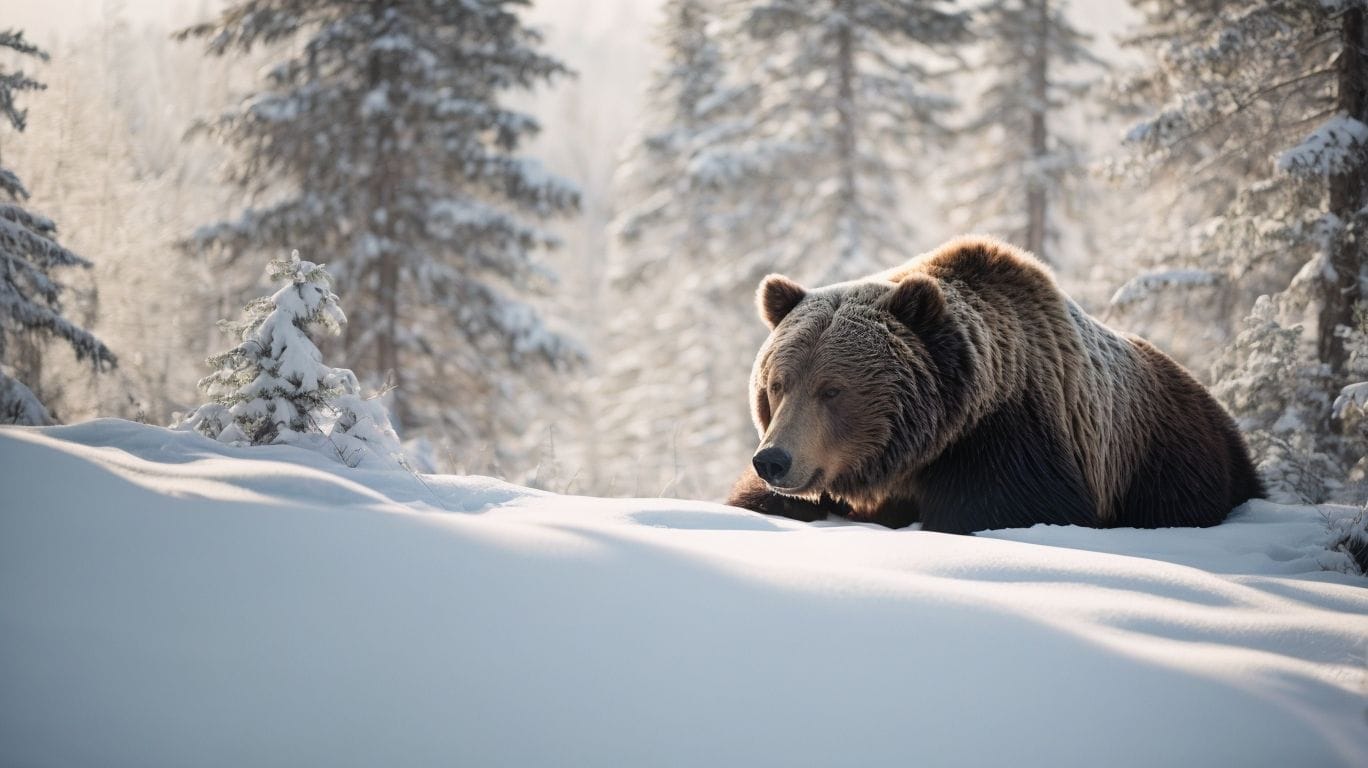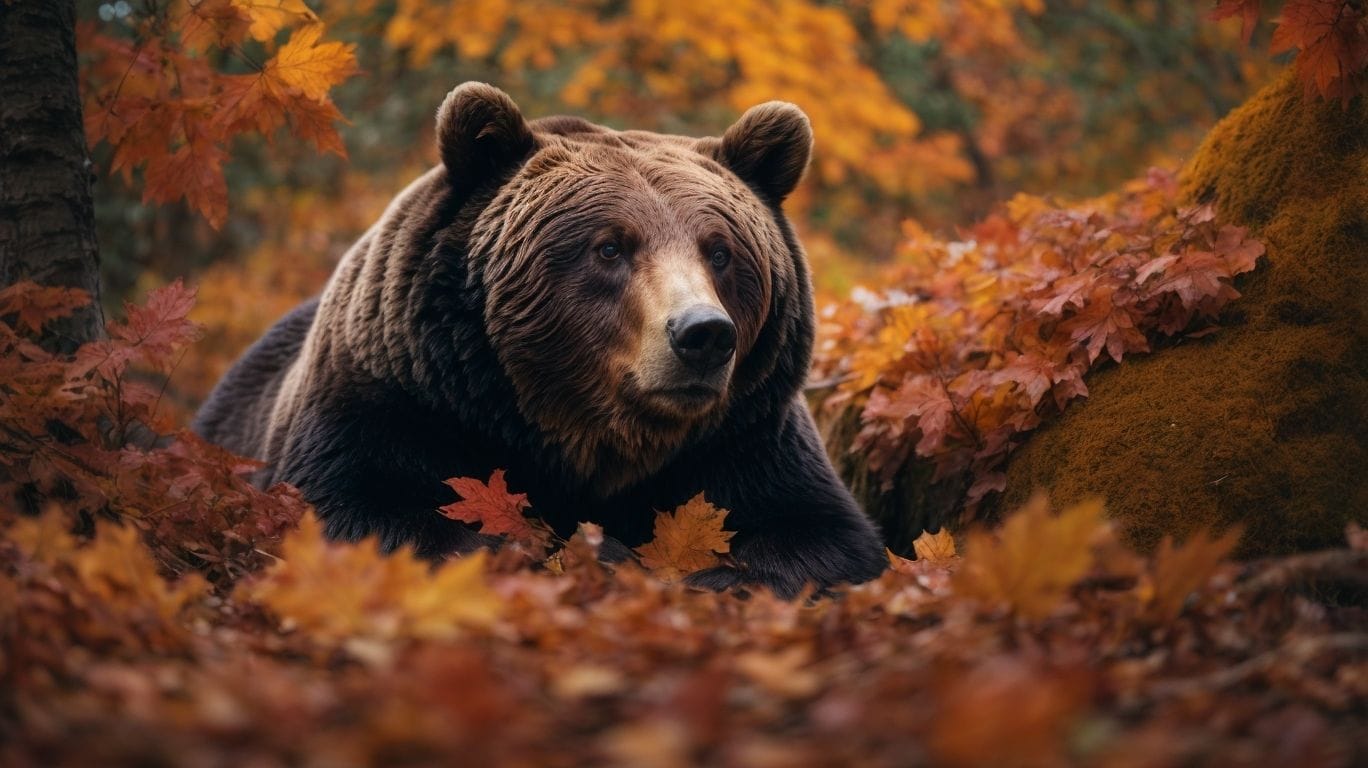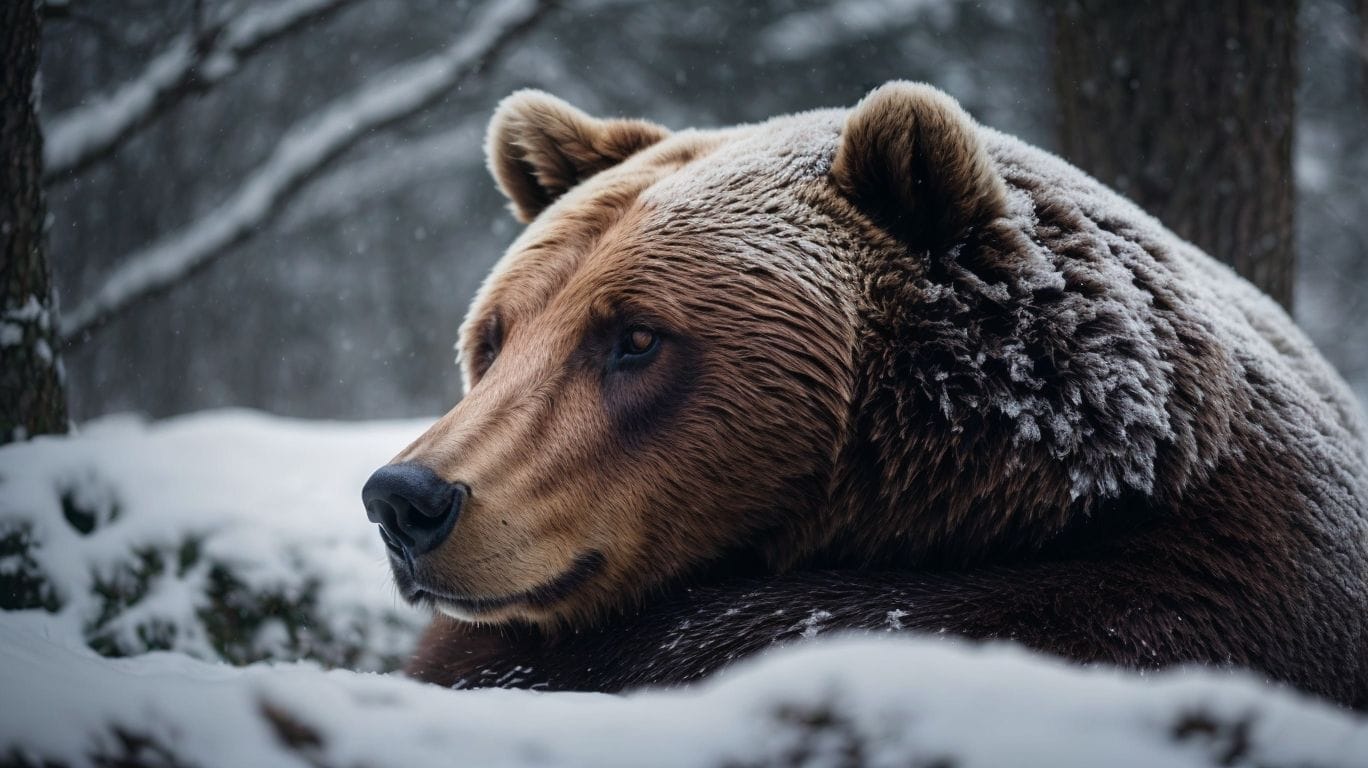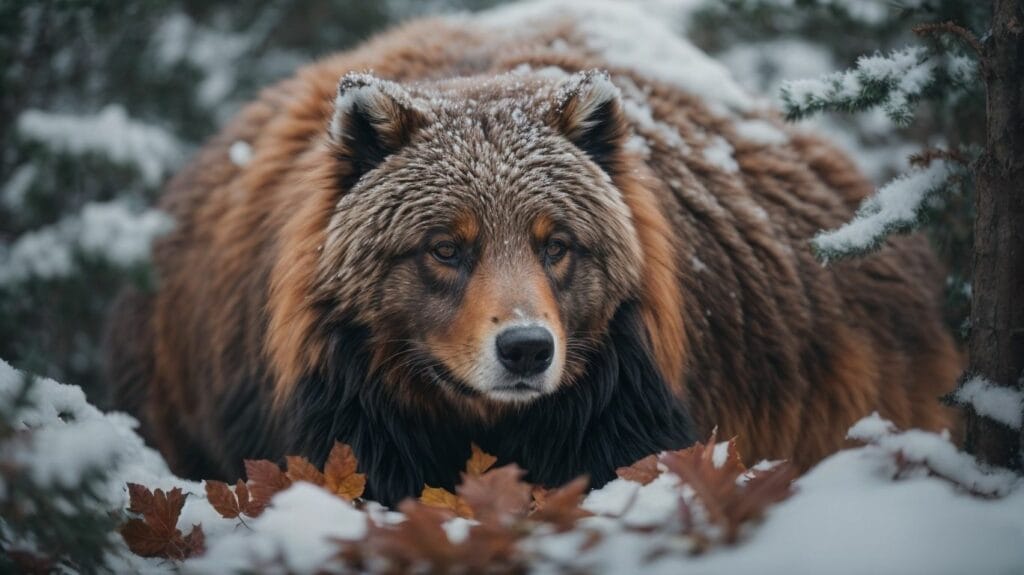Hibernation is a fascinating natural phenomenon observed in various animal species. During this period, animals undergo a state of dormancy characterized by reduced metabolic activity and lowered body temperature. Hibernation allows animals to conserve energy and survive during harsh environmental conditions when food is scarce.
Understanding hibernation requires knowledge of the animals that exhibit this behavior. Mammals like bears, bats, and groundhogs are well-known hibernators. Reptiles and amphibians, such as turtles, frogs, and lizards, also undergo a similar state. Surprisingly, even insects like ladybugs, bees, and butterflies, as well as other animals like snails, snakes, and hamsters, can hibernate.
During the preparation for hibernation, animals undergo physiological changes like accumulating fat reserves and finding sheltered locations. They lower their metabolic rate and heart rate, and their body temperature drops significantly.
While in hibernation, animals experience reduced brain activity, respiration, and heart rate, allowing them to conserve energy and survive for extended periods without food. This state of torpor is essential for their survival.
Exploring the fascinating world of hibernating animals and understanding their unique adaptations during this period provides valuable insights into the wonders of the animal kingdom.
Key takeaway:
- Hibernation is a survival strategy: Animals hibernate to conserve energy and survive harsh environmental conditions, such as extreme cold or lack of food.
- Mammals are the most common hibernators: Bears, groundhogs, and bats are among the mammals that hibernate. They enter a state of lowered body temperature and reduced metabolic activity.
- Insects and reptiles also hibernate: Some insects, such as bees and ladybugs, go into a dormant state during winter. Snakes, turtles, and frogs are examples of reptiles and amphibians that hibernate.
What is Hibernation?

Photo Credits: Petnarnia.Com by Ryan Williams
What is Hibernation?
Hibernation is a state of prolonged sleep and lowered metabolism that some animals enter during the winter months. It allows them to conserve energy and survive in cold environments when food is scarce.
During hibernation, the animal’s body temperature drops, its heartbeat and breathing slow down, and it doesn’t wake up easily. Examples of animals that hibernate include bears, groundhogs, bats, and some species of frogs and insects. Understanding what hibernation is can help us appreciate the incredible adaptations these animals have developed to survive harsh winters.
Why Do Animals Hibernate?

Photo Credits: Petnarnia.Com by Eric Campbell
Animals hibernate to survive harsh environmental conditions and conserve energy. During hibernation, their metabolic rates slow down, and they enter a state of deep sleep. This allows them to survive extreme temperatures, scarcity of food, and reduced daylight hours. Hibernation helps animals avoid competition for resources and reduces their vulnerability to predators. Examples of animals that hibernate include bears, chipmunks, snakes, and bats. By understanding why animals hibernate, we can appreciate the remarkable adaptations they have developed to ensure their survival.
Why do animals hibernate? Animals hibernate to survive harsh environmental conditions and conserve energy. During hibernation, their metabolic rates slow down, and they enter a state of deep sleep. This allows them to survive extreme temperatures, scarcity of food, and reduced daylight hours. Hibernation helps animals avoid competition for resources and reduces their vulnerability to predators. Examples of animals that hibernate include bears, chipmunks, snakes, and bats. By understanding why animals hibernate, we can appreciate the remarkable adaptations they have developed to ensure their survival.
Animals that Hibernate

Photo Credits: Petnarnia.Com by Timothy Wilson
As we unravel the fascinating world of hibernation, we focus our attention on the remarkable creatures that practice this remarkable survival strategy. From mammals to reptiles and amphibians, insects to other animals, we will explore the diverse categories of hibernators. Get ready to discover how these resilient beings adapt and endure through the long months of winter in their own unique ways. Prepare to be amazed by the incredible abilities and resilience of the animal kingdom!Mammals
Mammals are a diverse group of animals that exhibit hibernation behavior. Here is a table showcasing some mammals that hibernate:
| Mammal | Hibernation Period | Location |
|---|---|---|
| Bears | Several months | Northern Hemisphere |
| Bats | Winter months | Various habitats |
| Groundhogs | Winter months | North America |
During hibernation, these mammals experience significant physiological changes to conserve energy and survive harsh winter conditions. Bears, for example, reduce their metabolic rate and rely on stored fat for sustenance. Interestingly, some hibernators can experience periodic awakening during bouts of hibernation to raise their body temperature.
Reptiles and Amphibians
| Reptiles and amphibians are among the animals that undergo hibernation. They utilize different strategies to survive the cold winter months. |
| Reptiles such as turtles and lizards find shelter in burrows or under logs during hibernation. They lower their metabolic rate and rely on stored energy to survive. |
| Amphibians like frogs undergo a form of hibernation called brumation. They seek out aquatic habitats and bury themselves in mud or leaf litter. Their metabolic activity decreases, and they extract oxygen from the water through their skin. |
| By employing these strategies, reptiles and amphibians can endure the harsh conditions of winter until spring arrives. |
Insects
Bears are one group of animals that can hibernate. They have unique strategies to survive the winter months and resume their activities when conditions improve. Here is a table highlighting some common insects that undergo hibernation:
| Mammals | Reptiles and Amphibians | Insects | Other Animals |
| Bears | Turtles | Ladybugs | Snails |
| Bats | Frogs | Bees | Snakes |
| Groundhogs | Lizards | Butterflies | Hamsters |
During hibernation, insects go into a state of metabolic dormancy, reducing their activity and conserving energy. They choose suitable hiding spots, such as leaf litter or bark, to protect themselves from extreme temperatures. Some insects also produce antifreeze compounds to prevent ice formation in their bodies.
To support these incredible creatures, we can create insect-friendly habitats in our gardens, provide food sources, and avoid using harmful pesticides. This will help sustain insect populations and maintain the essential ecological balance.
Other Animals
| Mammals |
| Bears |
| Bats |
| Groundhogs |
| Reptiles and Amphibians |
| Turtles |
| Frogs |
| Lizards |
| Insects |
| Ladybugs |
| Bees |
| Butterflies |
| Other Animals |
| Snails |
| Snakes |
| Hamsters |
How Do Animals Prepare for Hibernation?

Photo Credits: Petnarnia.Com by Vincent Gonzalez
How Do Animals Prepare for Hibernation?Animals go through specific preparations to survive hibernation during harsh seasons. Here are the steps they take:
- Building Fat Reserves: Animals increase their food intake to build fat reserves, which act as an energy source throughout hibernation.
- Seeking Shelter: They find suitable shelter in burrows, dens, or nests to protect themselves from extreme weather conditions.
- Reducing Metabolic Rate: Animals lower their metabolic rate, slowing down bodily functions and conserving energy.
- Dropping Body Temperature: They reduce their body temperature to match the surrounding environment, minimizing energy expenditure.
- Creating Insulation: Animals develop thick fur, feathers, or extra layers of fat to provide insulation and retain body heat.
- Breathing and Heart Rate: Their breathing and heart rate decrease significantly, allowing them to conserve energy.
- Maintaining Hydration: Some animals decrease urine production or reabsorb water from their bladders to stay hydrated.
What Happens to Animals During Hibernation?

Photo Credits: Petnarnia.Com by Edward Jones
During hibernation, animals undergo significant physiological changes to survive the harsh winter conditions. What happens to animals during hibernation? Their body temperature, heart rate, and breathing slow down, helping to conserve energy. They live off stored body fat and do not eat or drink. Some animals, like bears, may wake up occasionally to shiver and maintain body temperature. Snakes, on the other hand, lower their metabolism dramatically and can survive without food for months. It is fascinating to see how these animals adapt to their environments to ensure their survival during hibernation.
Some suggestions for further reading on this topic include scientific papers that delve deeper into the specific adaptations and mechanisms behind hibernation. Nature documentaries can provide visual insights into the behaviors of animals during hibernation.
Some Facts About What Animals That Hibernate:
- ✅ Hibernation is a sleep state where an animal’s heart rate, breathing, and metabolism slow down to conserve energy and stay warm. (Source: Our Team)
- ✅ Bears are the classic example of hibernating animals, but their long winter sleep is not considered true hibernation by some experts because their body temperature stays high. (Source: Our Team)
- ✅ Besides bears, there are 20 other animals that hibernate, including bats, bumblebees, chipmunks, common poorwills, ground squirrels, fat-tailed dwarf lemurs, deer mice, groundhogs, hedgehogs, ladybugs, land snails, marmots, prairie dogs, raccoons, skunks, woodchucks, box turtles, wood frogs, snakes, and edible dormice. (Source: Our Team)
- ✅ Animals don’t actually sleep when they hibernate, but they periodically wake up to warm up their bodies. (Source: Our Team)
- ✅ The edible dormouse holds the record for the longest hibernation period, which can last up to eleven months. (Source: Our Team)


